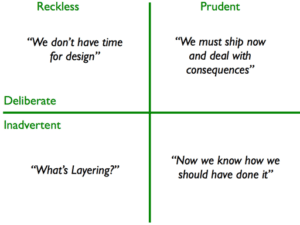A well planned strategy is the necessary bridge between brilliant leadership and excellent execution. Without it, your entire organisation cannot hope to respond quickly and effectively to challenges and changes within the landscape on which it operates.
Strategic planning involves identifying objectives, understanding what resources are needed to attain them, and then allocating the resources to the appropriate units to ensure they are used optimally towards the achievement of desired objectives. Among the end results which can be reflected by your team members are:
- Deeper understanding of the competitive environment;
- Snappy execution of plans;
- Faster, more aligned actions; and
- More intelligent and apt responses against strategic moves of the competition.
We understand the need to institute strategic management in such a way that your organisation can easily adapt to unforeseen developments. As such, all our solutions are formulated to make your organisation not only well-guided but also as dynamic as possible.
Strategy Formulation
Before you can proceed to map out any strategy for your company, you’ll have to study your company’s current environment. This will help you determine what courses of action should be taken to be able to navigate through such environment on your way to the end goal.
If you’re not a full time strategist, such a task can either be very daunting or deceivingly easy… the former can prevent your team from getting started, while the latter can lead your team astray.
Ideally, strategy formulation should be carried out as quickly and as efficiently as possible so you can move on to implementation before the competition can react. Our methods can enable your leaders to hit the ground running each time they set out on a strategic plan.
How?
- We can assist in accurately applying strategic tools like SWOT and Gap analysis, then help integrate the results into an effective strategic plan.
- We’ll train your team how to carry out effective research techniques so that the information they gather will really be what we need. This is because the tools mentioned earlier can only work effectively if the inputs were picked intelligently. Of course, if you want the entire process expedited, we can also conduct the research ourselves.
- We’ll establish best practices for top-down, bottom-up, and collaborative strategic management processes. We’ll even show you how to organise and hold meetings where team members are constantly engaged and in-sync, so action plans can be developed and relayed fast.
- We’ll see to it that strategies for all functional departments (such as IT management, supply-chain, HR, marketing, and legal) are in line with your business strategies, which should in, turn be aligned with your overall corporate strategy.
Strategy Evaluation
Your strategies have to be periodically assessed if you want to determine whether they are attuned to variations affecting your organisation. These changes may include new technologies, emerging competitors, new opportunities, as well as unexpected developments in the economic environment and political climate.
While no time limit is imposed for the build-up of resources vital to the attainment of a specific objective, the window of opportunity can shut on you before you can start amassing such resources. Given this possibility, it is important for your strategies to undergo evaluation processes that will determine whether you should pursue them or not.
Using only the most reliable evaluation techniques, we’ll help you establish whether:
- Your strategies will place your company in a position that will give it competitive advantage or will erode whatever advantage the competition already has;
- Your strategies are consistent with the landscape on which your company currently traverses;
- They are realistic enough in relation to the resources you have on hand;
- The associated risks have all been identified and the appropriate control measures have already been put in place;
- The time frames for their full realisation are both realistic and acceptable.
Portfolio Management
In today’s highly competitive market, many of the more successful enterprises are driven by project-based systems.
Now, there’s always a tendency for project managers to become overenthusiastic and to come up with a number of projects that can’t be sustained by available resources. If your project-based company frequently runs out of resources, then either you just have too many projects running or too much is being allocated to a select few.
In both instances, the problem does not necessarily lie on the individual project managers themselves. Rather, what is needed is the ability to have full control over existing projects and investments.
Your leadership should be able to rank projects in terms of their impact to your organisation’s growth, positioning, and profitability. This will give you sufficient information when deciding which projects to pursue, prioritise, or shut down. These are the benefits you’ll gain from our services:
- A vivid presentation of the big picture. Only when you can step back from all the detail and see the interplay of investments and resources will you be able to make wise decisions regarding how and where to position them.
- The ability to distinguish between projects with the highest potentials and those that are outdated.
- Access to expertise that will help you distribute your present IT infrastructure, human resources, financial resources, and facilities across running projects to obtain the biggest benefits for all stakeholders.
Contact Us
- (+353)(0)1-443-3807 – IRL
- (+44)(0)20-7193-9751 – UK


